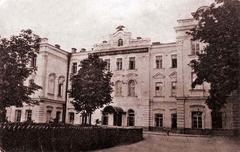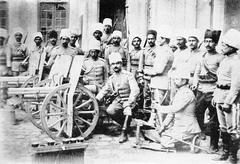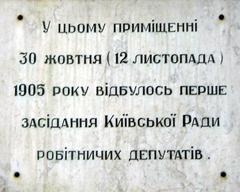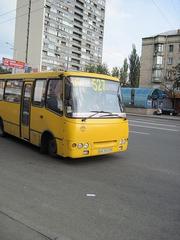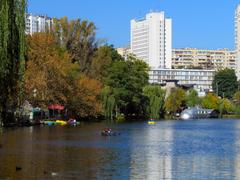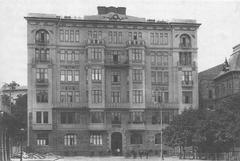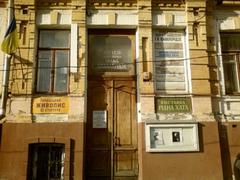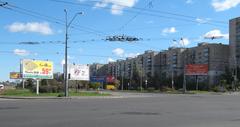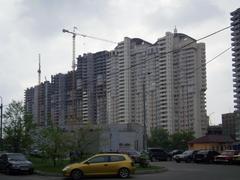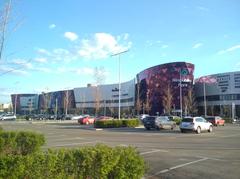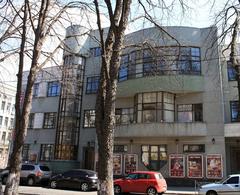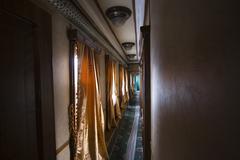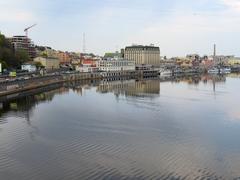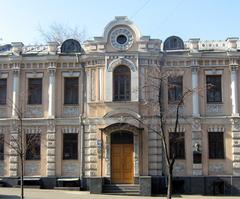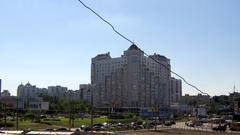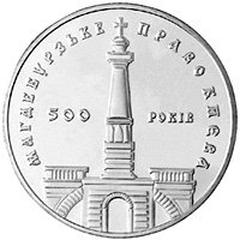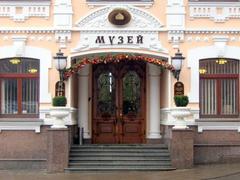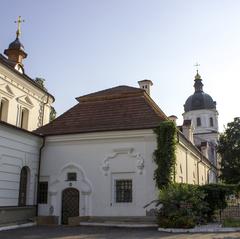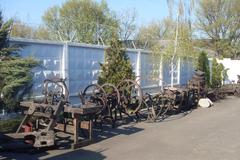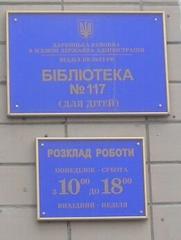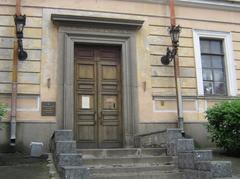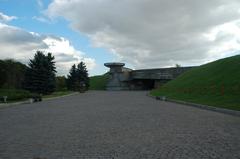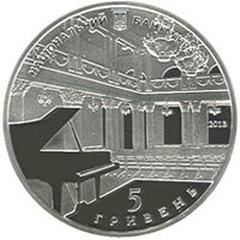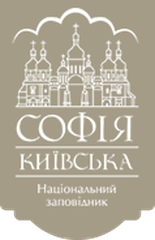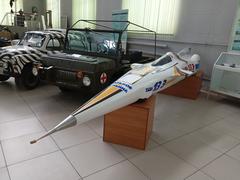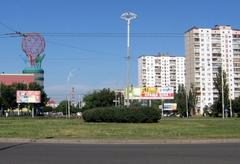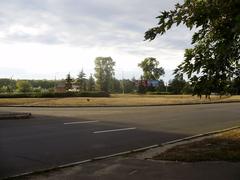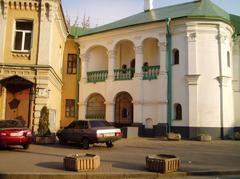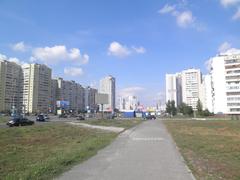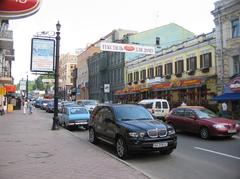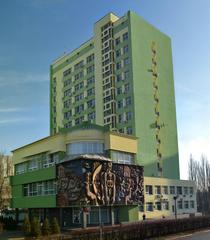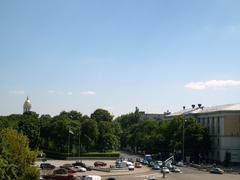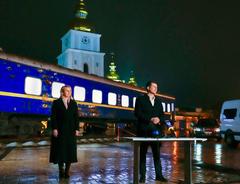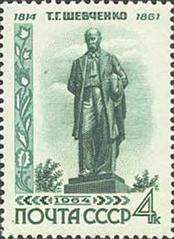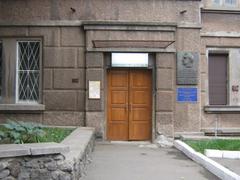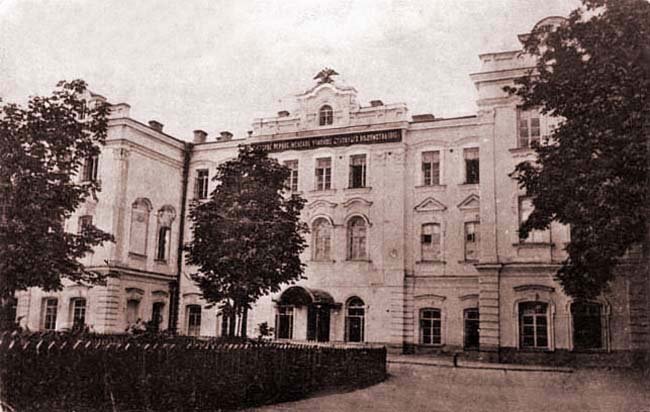
Klov Palace Kyiv: Visiting Hours, Tickets, and Historical Significance Guide
Date: 14/06/2025
Introduction to Klov Palace
Nestled in Kyiv’s historic Pechersk district, Klov Palace is a magnificent symbol of Ukrainian Baroque architecture and a testament to centuries of cultural, political, and educational transformation. Built between 1752 and 1756 under the patronage of Kyiv Pechersk Lavra, the palace was originally intended to host the Russian imperial family and high-ranking clergy, reflecting the city’s rising prestige in the 18th century. Its symmetrical façade, intricate stucco work, and blend of European and Ukrainian folk motifs make Klov Palace a unique monument of Kyiv’s imperial heritage and artistic tradition. Although the palace now serves as the seat of Ukraine’s Supreme Court, limiting interior public access, its stunning exterior and lush gardens invite visitors year-round. This comprehensive guide explores Klov Palace’s layered history, architectural significance, visitor information, travel tips, accessibility, nearby attractions, and more, ensuring an enriching experience for all who want to discover Kyiv’s Baroque treasures (Wikipedia: Klov Palace; Kyiv Tourism Portal; Ukraine-is.com).
Contents
- Historical Overview and Transformations
- Architectural Style and Design Principles
- Exterior and Interior Features
- Artistic and Cultural Significance
- Structural Innovations and Evolution
- Visiting Klov Palace: Hours, Tickets & Tips
- Accessibility and Travel Recommendations
- Events and Cultural Activities
- Nearby Attractions
- Preservation and Modern Role
- FAQ
- Visuals and Media
- Related Articles and Resources
- Summary and Recommendations
Historical Overview and Transformations
Origins and Early Construction
Klov Palace’s origins date to the reign of Empress Elizabeth Petrovna. Constructed from 1752–1756, the palace was designed by architects Gottfried Schedel and Pyotr Neelov, with master builder Stepan Kovnir overseeing its execution. Built to accommodate royal visitors to Kyiv, it reflects the city’s growing religious and administrative prominence (Wikipedia: Klov Palace).
19th Century Changes
Throughout the 19th century, Klov Palace adapted to changing civic needs. Initially used as a printing house by Kyiv Pechersk Lavra, it became the First Men’s Gymnasium (1811–1856), then served as a women’s religious school. The addition of a third floor in 1863 altered its original Baroque proportions, reflecting functional demands of the era (Ukraine-is.com).
20th and 21st Centuries
The palace suffered significant damage during wars and underwent several restorations. It housed the Museum of Kyiv History in the late 20th century and, since 2003, has served as the seat of the Supreme Court of Ukraine, symbolizing continuity and governance (Supreme Court of Ukraine).
Architectural Style and Design Principles
Klov Palace exemplifies the late Baroque style, blending European opulence with Ukrainian folk elements. Its two-story (later three-story) layout features a symmetrical façade, grand portico with Ionic columns, and elaborate stucco decorations. The Baroque emphasis on harmony, order, and decorative richness is evident throughout (Ukraine-is.com; Architecture Lab).
Exterior and Interior Features
Exterior
The palace’s façade boasts a central risalit, pilasters, pediment, and symmetrically arranged windows. Originally surrounded by extensive orchards and gardens, the site integrates architecture with lush landscaping—a hallmark of Baroque design. The location’s linden trees lent their name to the prestigious Lypki district (Ukraine-is.com).
Interior
Though much of the original interior was lost to fire and subsequent renovations, surviving features include stucco moldings, gilded details, and a grand hall with a Baroque fresco ceiling. Soviet-era and Supreme Court adaptations have altered some historic elements, but fragments of original artistry remain (Ukraine-is.com).
Artistic and Cultural Significance
Klov Palace stands out for its unique fusion of European Baroque motifs and Ukrainian artistic traditions. The main hall’s frescoed ceiling, the work of Ukrainian folk artists, exemplifies Baroque illusionism and ceremonial grandeur. The palace is also a cultural symbol for Kyiv, reflecting its history as a religious, imperial, and now governmental center (Ukraine-is.com; throughatravellens.com).
Structural Innovations and Evolution
Built with thick brick masonry for fire resistance and durability, the palace’s central axis and enfilade layout allow for processional movement—typical of Baroque palaces. The 19th-century addition of a third floor required structural reinforcement, demonstrating adaptability and resilience (Discover.ua).
Visiting Klov Palace: Hours, Tickets & Tips
Location
Klov Palace is located at 8 Klovsky Uzviz, Pechersk district, Kyiv, 01021. The nearest metro station is Klovska (Line 3, green), only a short walk away (Kyiv Metro Map).
Visiting Hours
- Palace Grounds: Open daily from 9:00 AM to 6:00 PM, with hours subject to change for security or official events.
- Interior Access: Generally restricted due to the Supreme Court’s presence. Occasional guided tours are available by advance arrangement or during cultural heritage events (Supreme Court of Ukraine).
Tickets
- Grounds: Free admission.
- Guided Tours: Advance booking required; nominal fee (100–200 UAH/person) may apply. Reserve via local tour operators or Kyiv’s tourist centers.
- Photography: Exterior photography is permitted; interior photography is typically restricted (throughatravellens.com).
Accessibility and Travel Recommendations
- Mobility: The palace grounds are mostly accessible, but some surfaces are uneven. Contact the administration for specific needs.
- Security: Bag checks and ID verification may be required. Monitor local news and advisories for updates (throughatravellens.com).
- Dress Code: Respectful attire is recommended, especially if joining interior tours.
- No Onsite Facilities: There are no restrooms or cafés at the palace.
Events and Cultural Activities
While the palace’s governmental use limits regular public events, the gardens occasionally host open-air concerts, art exhibitions, and heritage festivals, especially during summer and national holidays. The palace is often illuminated for special occasions such as Independence Day and Constitution Day (Visit Kyiv).
Nearby Attractions
Enhance your visit with these nearby Kyiv historical sites:
- Kyiv Pechersk Lavra: UNESCO World Heritage monastery complex.
- Mariinsky Palace and Park: Official residence and ceremonial grounds.
- House with Chimeras: Art Nouveau marvel.
- Taras Shevchenko Park: Lively green space.
- Verkhovna Rada: The Ukrainian Parliament building.
Each landmark is within walking distance, making Klov Palace an excellent starting point for exploring Pechersk (thecrazytourist.com).
Preservation and Modern Role
Klov Palace is protected as a national architectural monument. Restoration efforts safeguard its historical features while accommodating its role as Supreme Court headquarters. Heritage organizations and public campaigns support ongoing preservation (Supreme Court of Ukraine).
Frequently Asked Questions (FAQ)
Q: What are Klov Palace’s visiting hours?
A: The grounds are open from 9:00 AM to 6:00 PM; interior access is limited.
Q: Do I need tickets to visit?
A: Grounds are free; interior tours require advance booking and may incur a nominal fee.
Q: Is photography allowed?
A: Yes, for the exterior. Interior photography is generally not permitted.
Q: Is Klov Palace accessible for people with disabilities?
A: The grounds are partially accessible. Some areas have uneven paving.
Q: What other sites should I visit nearby?
A: Kyiv Pechersk Lavra, Mariinsky Palace, House with Chimeras, and Taras Shevchenko Park.
Visuals and Media
Related Articles and Resources
External Resources:
- Wikipedia: Klov Palace
- Klov Palace in Kyiv, Ukraine-is.com
- Kyiv Tourism Portal
- Supreme Court of Ukraine
- Kyiv City Guide – Visit Kyiv
Summary and Recommendations
Klov Palace is a cornerstone of Kyiv’s architectural and cultural identity, representing the city’s imperial heritage and enduring spirit. Its Baroque beauty, enriched by Ukrainian artistry, offers a glimpse into 18th-century craftsmanship. Although interior access is restricted, the palace’s exterior, gardens, and central location make it an essential stop for history and architecture lovers. Combine your visit with other Pechersk landmarks for a comprehensive exploration. Stay informed about special events and guided tours via official channels and the Audiala app, and immerse yourself in the living legacy of Ukrainian culture (Ukraine-is.com; Visit Kyiv).
